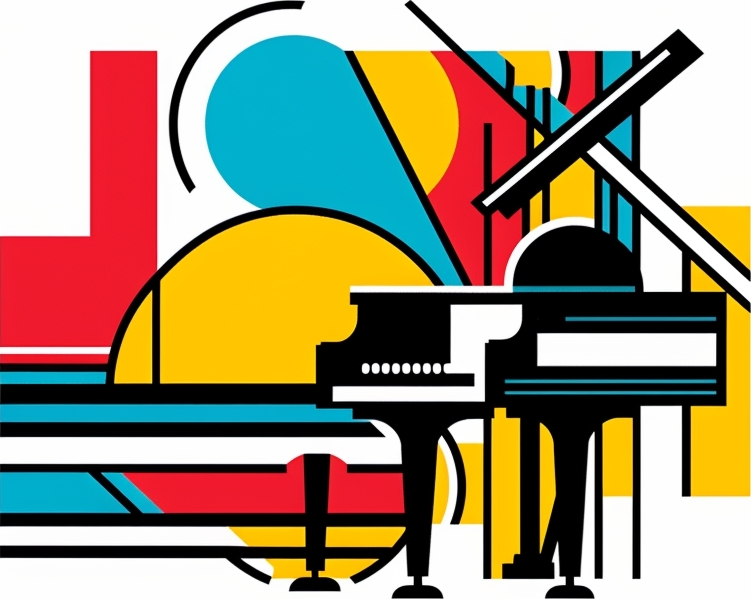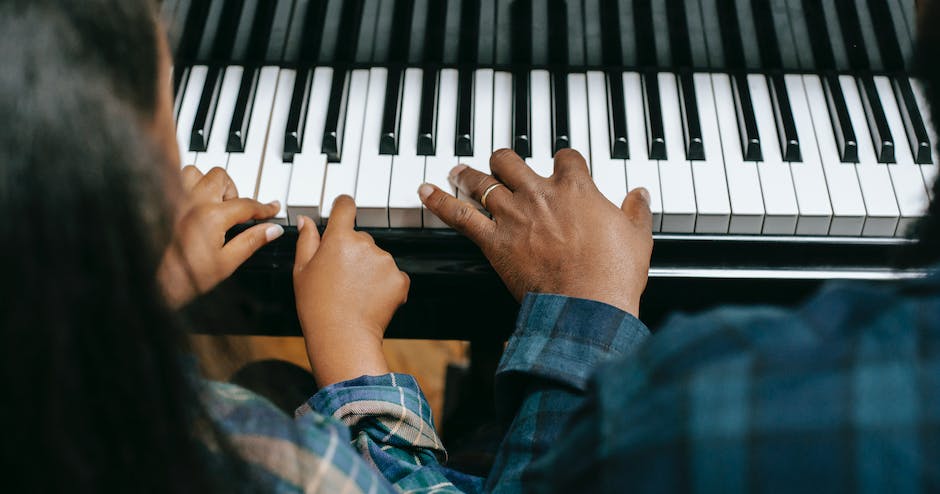The history of piano tuning dates back to the early days of pianos themselves. In the 1700s, the first pianos were being developed, and tuning techniques were relatively crude and basic.
One of the earliest methods of tuning involved using tuning forks, which are metal forks with two prongs that vibrate at a specific pitch when struck. These forks were used to set the pitch of the piano’s middle C, then the other notes were tuned relative to that. This method was known as tempering, and it involved adjusting the pitches of certain notes slightly to make them sound better in different keys.
Another early tuning technique involved using stretched wire to tune the piano’s strings. The wire would be wrapped around the tuning pin and then tightened or slackened until the desired pitch was achieved. This method was time-consuming and required a lot of skill and patience, but it was the standard tuning method for many years.

Innovations in the 1800s: The Rise of the Piano Industry
As the piano industry grew in the 1800s, so too did innovations in piano tuning. In 1821, the first tuning fork was developed, which allowed for more accurate and consistent tuning of pianos.
Around the same time, a new tuning method called equal temperament was developed. This involved dividing the octave into 12 equal semitones, which allowed pianos to be tuned to play in any key without sounding out of tune. This was a significant development, as it allowed pianists to play more complex and varied music.
In the late 1800s, technological advancements led to the development of machine-made tuning pins, which provided a more uniform and stable tuning experience. This paved the way for modern tuning techniques that we still use today.

Advancements in Technology: The Birth of Electronic Tuning Devices
In the 20th century, technology advancements led to the birth of electronic tuning devices. These devices provide unbelievable precision in tuning pianos and can be used for fine tuning or even a full piano tuning. Electronic tuning devices use software programs to evaluate the stabilities of different notes of the piano.
Companies such as Cybertuner, Peterson, and TuneLab developed tuning software which has become very popular among piano tuners. Electronic tuning devices are faster and more accurate than traditional manual tuning methods. Nowadays, tuning an entire piano is much quicker and accurate than before.
Compared to the traditional methods, the using of electronic tuning devices can be a time-saver and a faster process, especially for busy tuners, however, some argue that they could take away the “human touch” of piano tuning.
The Human Touch: Why Traditional Tuning Methods Remain Relevant
While technological advances have opened new doors for piano tuning, traditional tuning methods remain critically important. The human touch of piano tuning cannot be replaced by an electronic device. The skill, precision, and expertise of an experienced tuner are still essential in producing the best sound of a piano.
For techniques such as ear-training, tone-judging and even working around any damaged or missing parts of the piano, the expertise of the tuner is a must-have to create the beautiful sound a piano can produce.
In addition, pianos, just like every other instrument, have their unique characteristics. Hence, it takes an experienced tuner to understand these nuances and tune the instrument perfectly to bring out its full potential. Many professional pianists and owners prefer traditional piano tuning methods because of the warmth and personality they bring to the instrument.
Modern Tools and Techniques: How Technology Has Transformed Piano Tuning
Today, piano tuners have access to a wide range of tools and technologies that can enhance the tuning process. Electronic tuning devices have become an indispensable tool for many professional tuners. The latest devices are digital and highly advanced, with a range of features and functions that can help pianists achieve the perfect sound.
Laser tuning devices, for example, can help to identify out-of-tune notes by detecting their sound waves. They can also help to diagnose mechanical problems, such as missing pins, which can cause a piano to go out of tune.
Another modern tool used in the piano tuning world is Piano Life Saver Systems. These systems use a steam humidifier and a dehumidifier to maintain the relative humidity around the piano, helping to keep the instrument’s sound stable by reducing the swelling and shrinking of the soundboard due to humidity changes.
Tuning for Today’s Pianos: Common Problems and Solutions
Even with the best tools and techniques available, pianos can still present challenging problems for tuners. Some of the most common issues that tuners face today include pitch instability, string breakage, poor tone quality, and different sound characteristics among the different brands and models of piano.
In many cases, these issues can be resolved through proper piano maintenance, including regular tuning, cleaning, and replacement of worn parts such as hammers and strings. Additionally, humidity control is very important in regions of extreme weather, specially in dry or humid climates which can cause the soundboard to swell or shrink, throwing the tuning off.
For pianos that have gone without proper maintenance for many years, a full restoration may be necessary. This usually involves a complete overhaul of the instrument, from new strings, hammers & action parts, and rebuilding the soundboard. Luckily, restoring an old, treasured family piano can bring it back to its full glory and provide a lifetime of enjoyment for the family.


Leave a Reply